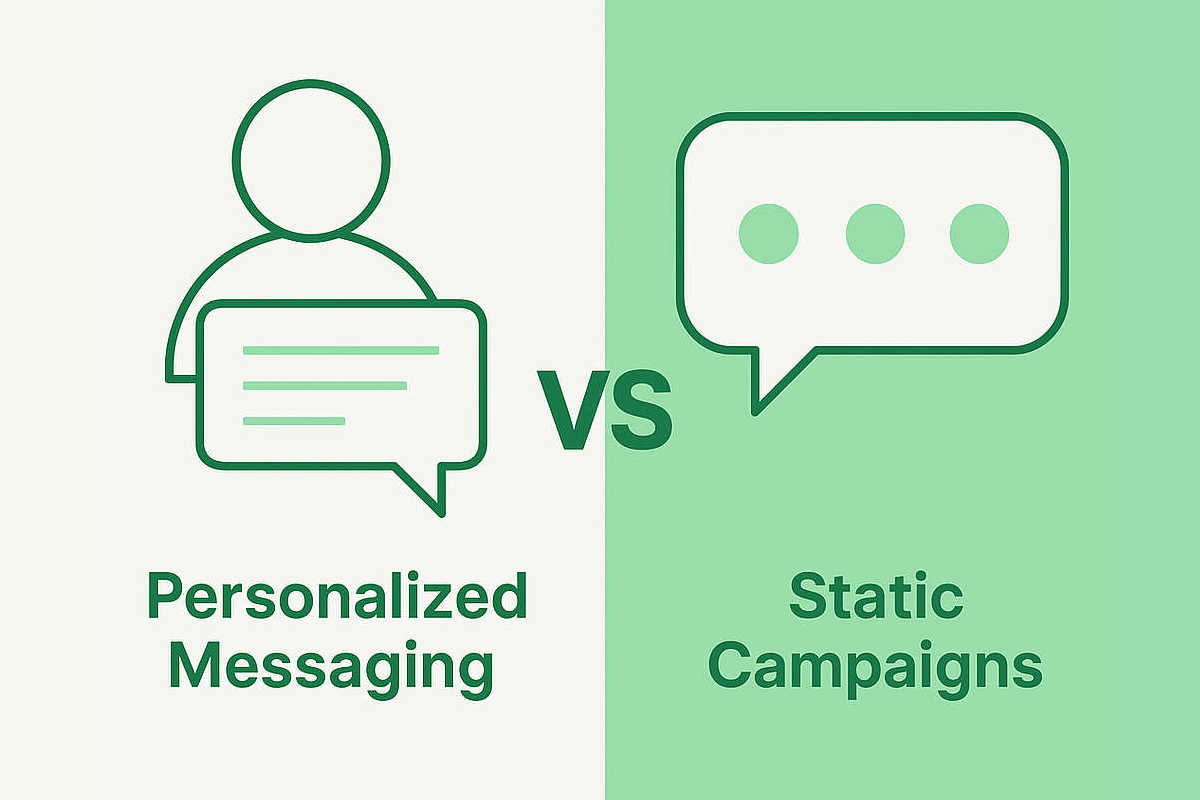Why Personalized Messaging Outperforms Static Campaigns

⏱ Reading time: ~7 minutes
Personalized messaging drives deeper engagement, stronger loyalty, and up to 40% more revenue. This article explores what personalization means today, where it goes wrong, and how you can start doing it right — with practical steps and expert insights from Procode.
Here’s what we’ll cover:
What It Is
Why It Matters
Examples (Good & Bad)
FAQs
What Is Personalized Messaging?
Personalized messaging goes far beyond using someone’s name. Today’s users expect messages that reflect their context — behavior, timing, and preferences — not just their identity. Relevance is the new baseline.
Why Personalized Messaging Matters in 2025
71% of consumers expect companies to deliver personalized interactions, and 76% get frustrated when this doesn’t happen.
According to a McKinsey study (2024), companies that lead in personalization generate 40% more revenue from those activities than their average competitors.
McKinsey, 2024
Customers expect messaging that aligns with their behavior, interests, and preferences. Delivering timely and relevant content helps build trust and loyalty. Today, personalization is a standard — not an extra. Only the most relevant messages earn attention in today’s noisy world.
What Personalized Messaging Looks Like in Practice
- Behavior: what the customer does, when, how often?
- Channel: Viber, Email, SMS, or In-App?
- Timing: when is the user active?
- Reactions: what previously worked?
Example: A customer views the same product three times in one week. The right move? A helpful nudge or personalized offer — not a generic newsletter blast.
When Personalized Messaging Fails (and Backfires)
- Example 1: A mobile provider rewards a customer for waiting on hold with 100MB of data… but the customer has an unlimited plan.
- Example 2: A promotion is sent for a product the customer already purchased.
- Example 3: A one-size-fits-all push notification is sent to the entire user base — regardless of engagement level.
These aren’t just small mistakes — they make you look out of touch, and customers can feel that instantly. Personalization, when done poorly, feels generic or even disrespectful. But by learning what not to do, marketers can refine their approach and improve both performance and perception.
How to Create Messaging That Feels Truly Personalized
Personalized messages work when they match the user’s context, not just their name. Here’s what to check before you hit send:
- Triggered by behavior: Is the message based on something the user did — like visiting a page or leaving a cart?
- Valuable: Does it offer something meaningful — a tip, discount, or helpful reminder?
- Timely & channel-aware: Is it sent at the right moment, through the channel the user prefers?
- Human: Does it sound natural, like something written for a person — not a mass blast?
From Campaigns to Conversations
Personalization isn’t a fancy trick — it’s how modern brands stay real, listen, and build meaningful relationships with people. The move from campaigns to conversations means understanding intent, context, and behavior. It’s about relevance, not volume.
How to Start Personalized Messaging: 3 Easy Actions
- Review your latest campaign. Was the message relevant to everyone, or did it sound generic? Try splitting it into two variants for different segments.
- Identify one key trigger. For example: “User registered but hasn’t engaged in 3 days” or “Viewed a product category twice.” Set up a targeted message for that behavior.
- Check your channels. Are you still sending everything via email or SMS? Explore adding preferred channels like Viber or WhatsApp.
Frequently Asked Questions About Personalization
Authority & Context: Learn More About Personalized Engagement
Explore our Personalization & Engagement use cases
- HubSpot: Why We Love Personalized Experiences + Brand Examples
- Forbes: Personalization in Marketing – Beyond the Buzzword
At Procode, we’ve spent years helping businesses deliver truly contextual messaging across SMS, Viber, WhatsApp, In-App, and Email. With hundreds of thousands of messages delivered across industries, our platform enables businesses to build real connections.
Related articles:
- SMS vs Viber vs WhatsApp – Which Is the Best Solution for Business Messaging?
- In-App vs Push Notifications – A Practical Comparison
Conclusion: Why Personalized Messaging Is Worth It
Real personalization isn’t about tools or automation — it’s about showing people you understand them and care enough to be relevant. In a world where customers have a voice and choices, brands that listen and respond with relevance will always stand out.
📌 Curious how personalized your current campaigns really are?